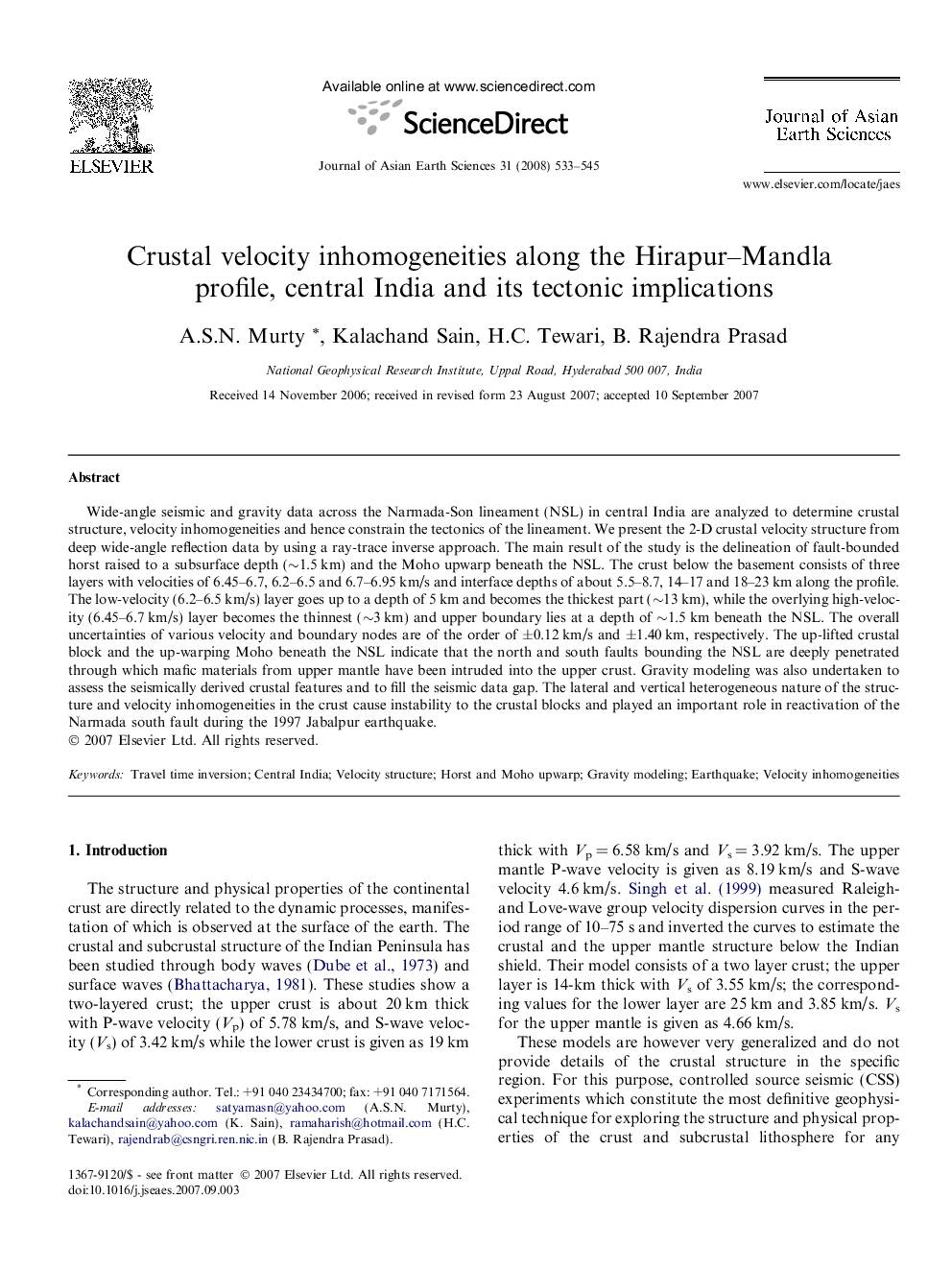| Article ID | Journal | Published Year | Pages | File Type |
|---|---|---|---|---|
| 4732504 | Journal of Asian Earth Sciences | 2008 | 13 Pages |
Abstract
Wide-angle seismic and gravity data across the Narmada-Son lineament (NSL) in central India are analyzed to determine crustal structure, velocity inhomogeneities and hence constrain the tectonics of the lineament. We present the 2-D crustal velocity structure from deep wide-angle reflection data by using a ray-trace inverse approach. The main result of the study is the delineation of fault-bounded horst raised to a subsurface depth (â¼1.5 km) and the Moho upwarp beneath the NSL. The crust below the basement consists of three layers with velocities of 6.45-6.7, 6.2-6.5 and 6.7-6.95 km/s and interface depths of about 5.5-8.7, 14-17 and 18-23 km along the profile. The low-velocity (6.2-6.5 km/s) layer goes up to a depth of 5 km and becomes the thickest part (â¼13 km), while the overlying high-velocity (6.45-6.7 km/s) layer becomes the thinnest (â¼3 km) and upper boundary lies at a depth of â¼1.5 km beneath the NSL. The overall uncertainties of various velocity and boundary nodes are of the order of ±0.12 km/s and ±1.40 km, respectively. The up-lifted crustal block and the up-warping Moho beneath the NSL indicate that the north and south faults bounding the NSL are deeply penetrated through which mafic materials from upper mantle have been intruded into the upper crust. Gravity modeling was also undertaken to assess the seismically derived crustal features and to fill the seismic data gap. The lateral and vertical heterogeneous nature of the structure and velocity inhomogeneities in the crust cause instability to the crustal blocks and played an important role in reactivation of the Narmada south fault during the 1997 Jabalpur earthquake.
Related Topics
Physical Sciences and Engineering
Earth and Planetary Sciences
Geology
Authors
A.S.N. Murty, Kalachand Sain, H.C. Tewari, B. Rajendra Prasad,
